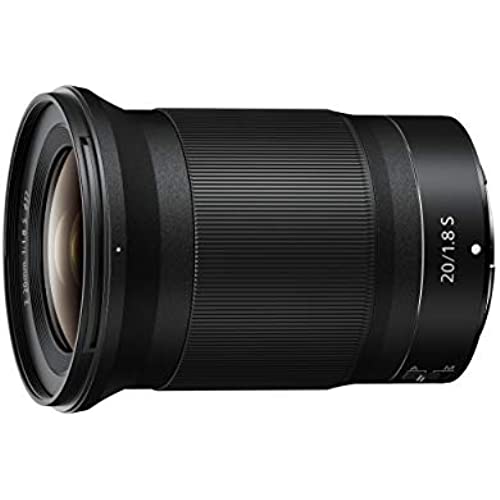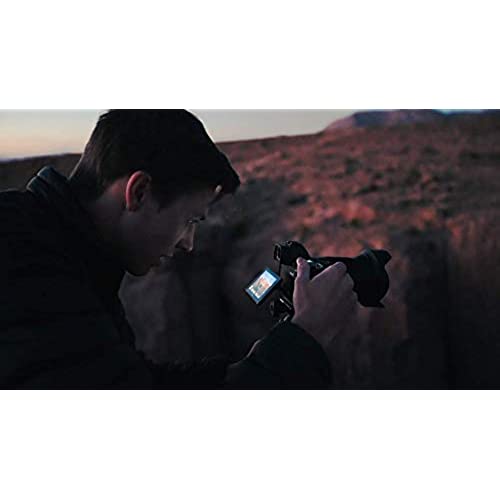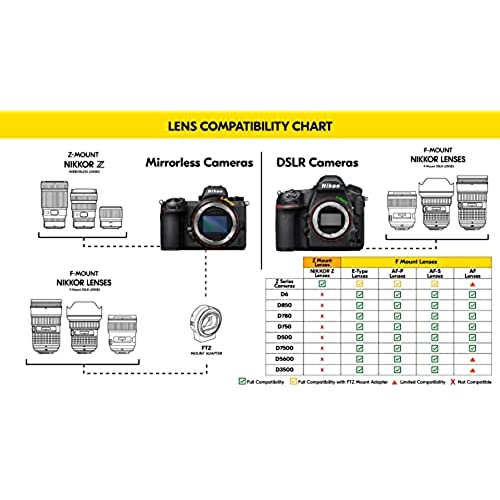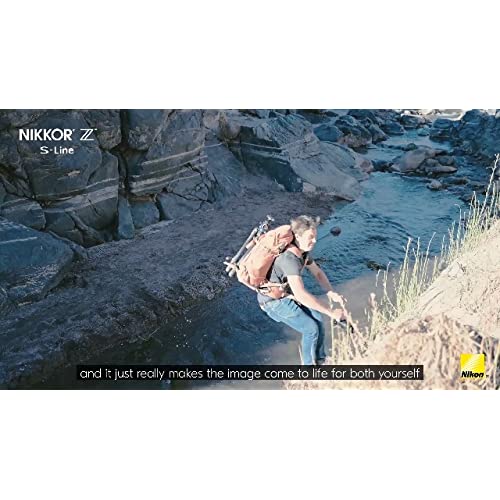











NIKON NIKKOR Z 20mm f/1.8 S Ultra Wide Angle Fast Prime Lens for Nikon Z Mirrorless Cameras
-

Tony321
> 24 hourThis is an excellent lens for wide angle, landscape photography. I took photos of a city skyline at sunset. Everyone who has seen them were extremely impressed with their quality,
-

April L. Kearns
> 24 hourMy new go to wide angle. It performs beautifully for both landscapes and nightscapes. Learning how to photograph the Milky Way and this lens makes it simple.
-

Karlotto
> 24 hourGood: Sufficient sharp; low weight; goes smooth on Z7 compared to other Nikon lenses made in China; auto focus (pin point) on stars works very good; seems to meet typical MTF spec; only very corners soft at 1.8 - 5.6; top half was not as sharp as bottom half (no problem , if you set AF Fine Tune=OFF and use single point on your subject you will be fine or stay > =F5.6 for landscapes ), 77mm filters, in case you need it; close focus is excellent from 2-3 inches to inf, which is very important for wide angle lenses; good color representation.
-

Francis Hammes
> 24 hourUse for landscape and 1.8F allows excellent results in low light environment.
-

Ron Andersen
> 24 hourCoupled to the Nikon Z7, the speed and sharpness are everything I expected.
-

jorge monzón
> 24 hourMuy ligero y luminoso
-

cgold
> 24 hourI just bought both lenses to try for astrophotography and milky way photos. The Nikon z 20mm lens is very sharp and great for the stars. It is much lighter and smaller than the Sigma lens and can also be used for daytime landscapes. The pictures from the Sigma 14-24mm were comparable in sharpness for stars and low light. Benefit of Nikon Z lens 20mm is that it much smaller and lighter 1.2lb than the Sigma lens 2.5lb. Also, it takes a 77mm filter which is easier to find. The Sigma needs a huge filter if you can find one. Also, the Nikon Z lens fits in a camera bag easily. The Sigma doesnt. The Sigma lens is a huge lens and doesnt really fit in a camera bag and weighs as much as the Nikon Z6 ii camera itself. The benefit of the Sigma lens is that at 14mm it captures 25% more milky way and sky than the Nikon 20mm lens. You would have a hard time carrying the Sigma 14-24mm lens during the day without your arm getting tired. Also, the Sigma lens only fits on an FTZ adapter and the adapter is hard to put on the Z6 camera while its on a tripod. You have to take the camera off the tripod to put the adapter on and the Sigma lens on, which is a pain and can force you to re-polar align again if you use a star tracker. However, most pictures of milky way with the Z 20mm lens cut off part of the milky way. They seem to capture mainly the galactic core and not much else. The Sigma captures much more of the milky way and sky. So its a trade off between the 2 lenses. I am trying to decide which lens to keep and which lens to return. Tough choice.
-

Pierre Houle
> 24 hourThis is an excellent lens. I plan on using it for astrophotography since it has a f/1.8 !
-

Neil
> 24 hourI have the old version 20 f1.8G. Comparing to the old one, this Z lens is extremely sharp from corner to corner even in F1.8, which makes it a perfect lens for astrophotography. Of course you can use it for landscape or under any low light condition. I also have the Z 35 f1.8, but honestly if this 20mm f1.8 is coming out first, I will definitely get this one instead of the 35 f1.8, wider is always better. Overall I think this Z lens is beyond my expectation and I am happy to have it!
-

Dan De Lion
> 24 hourThe 20mm f1.8 is just another world leading Z-S lens. It is razor sharp, center to corners, wide open! It controls all the usual lens aberrations. Bokeh is smooth and creamy, for a 20mm lens. Build quality is top notch, and it is weather sealed. Whats not to like?
